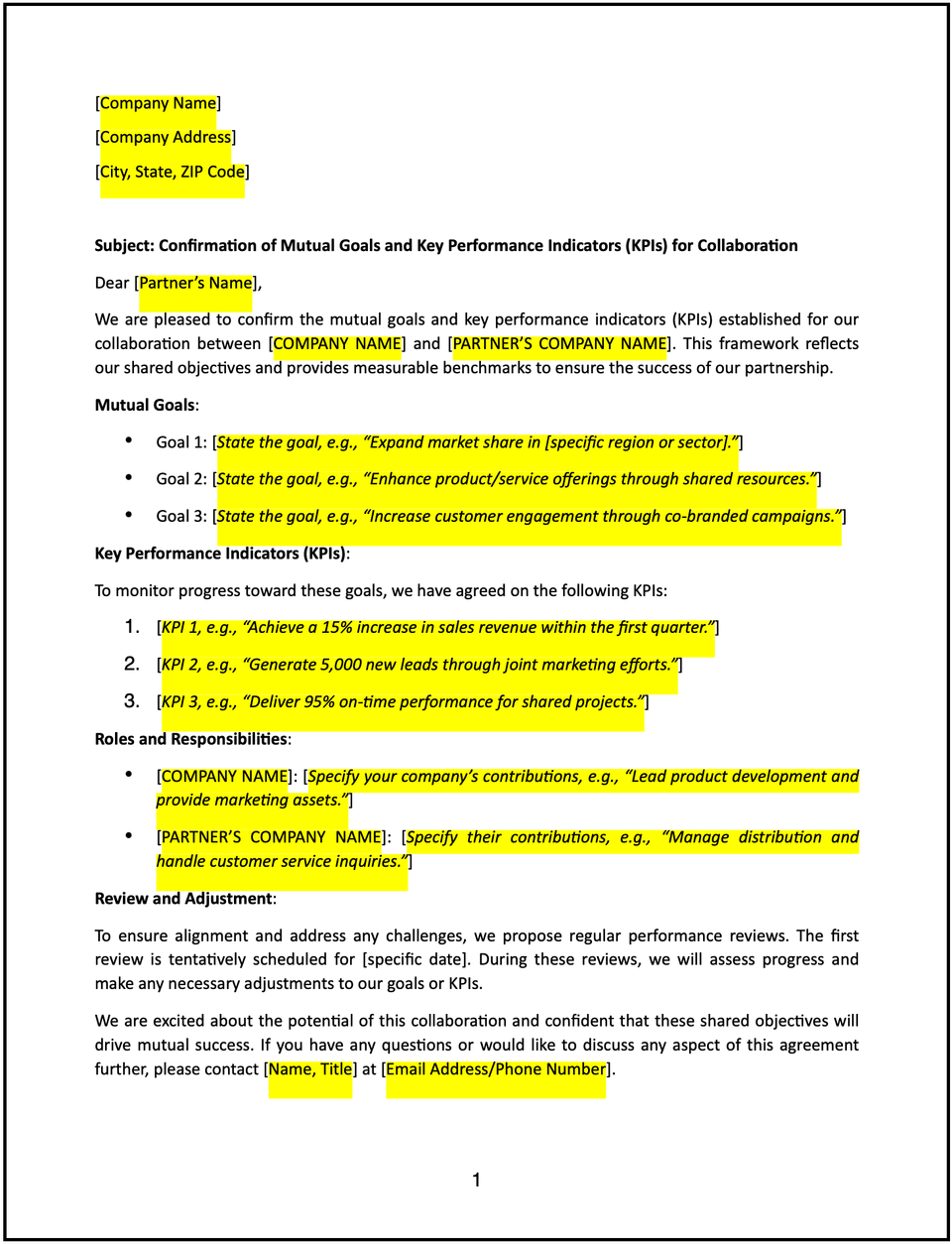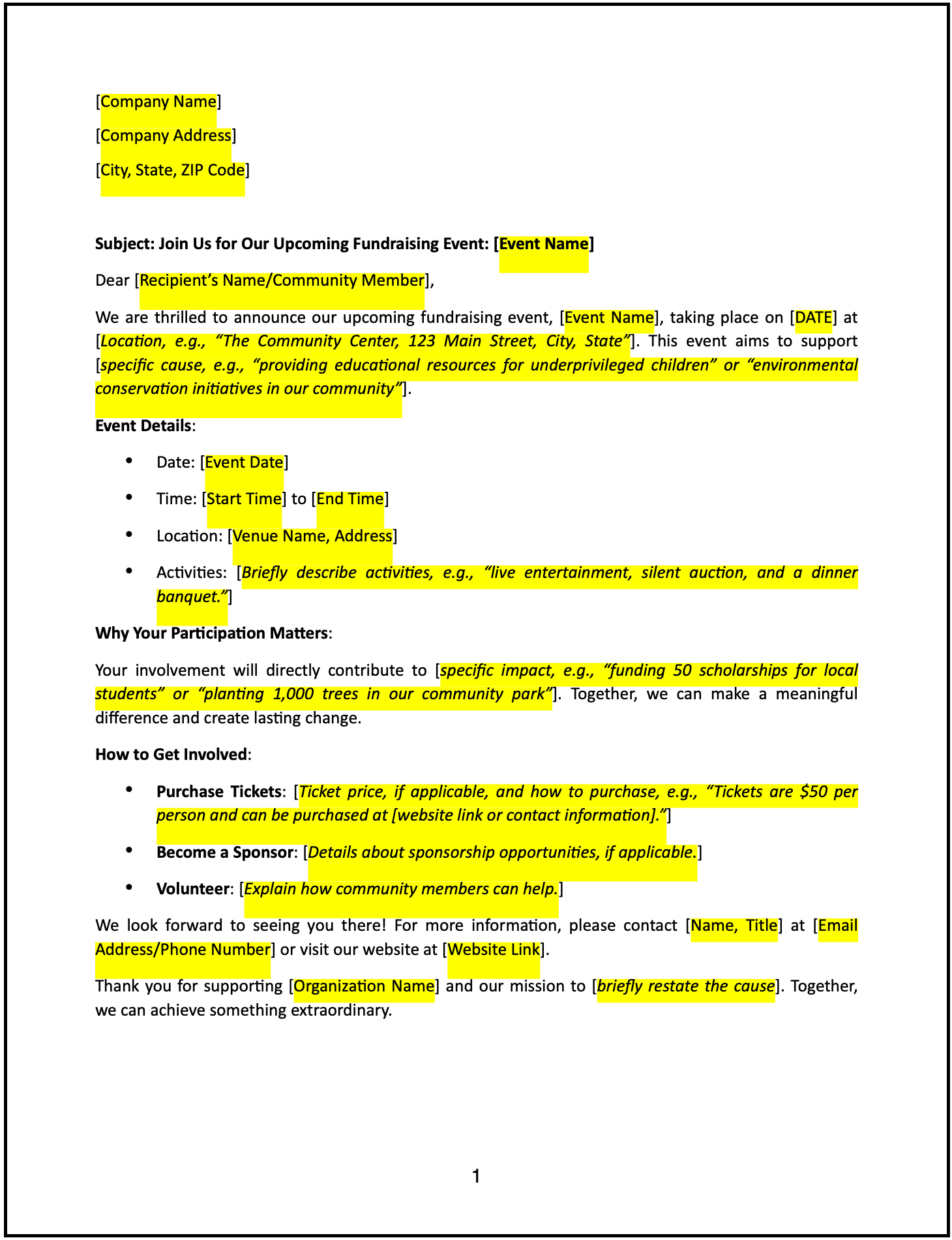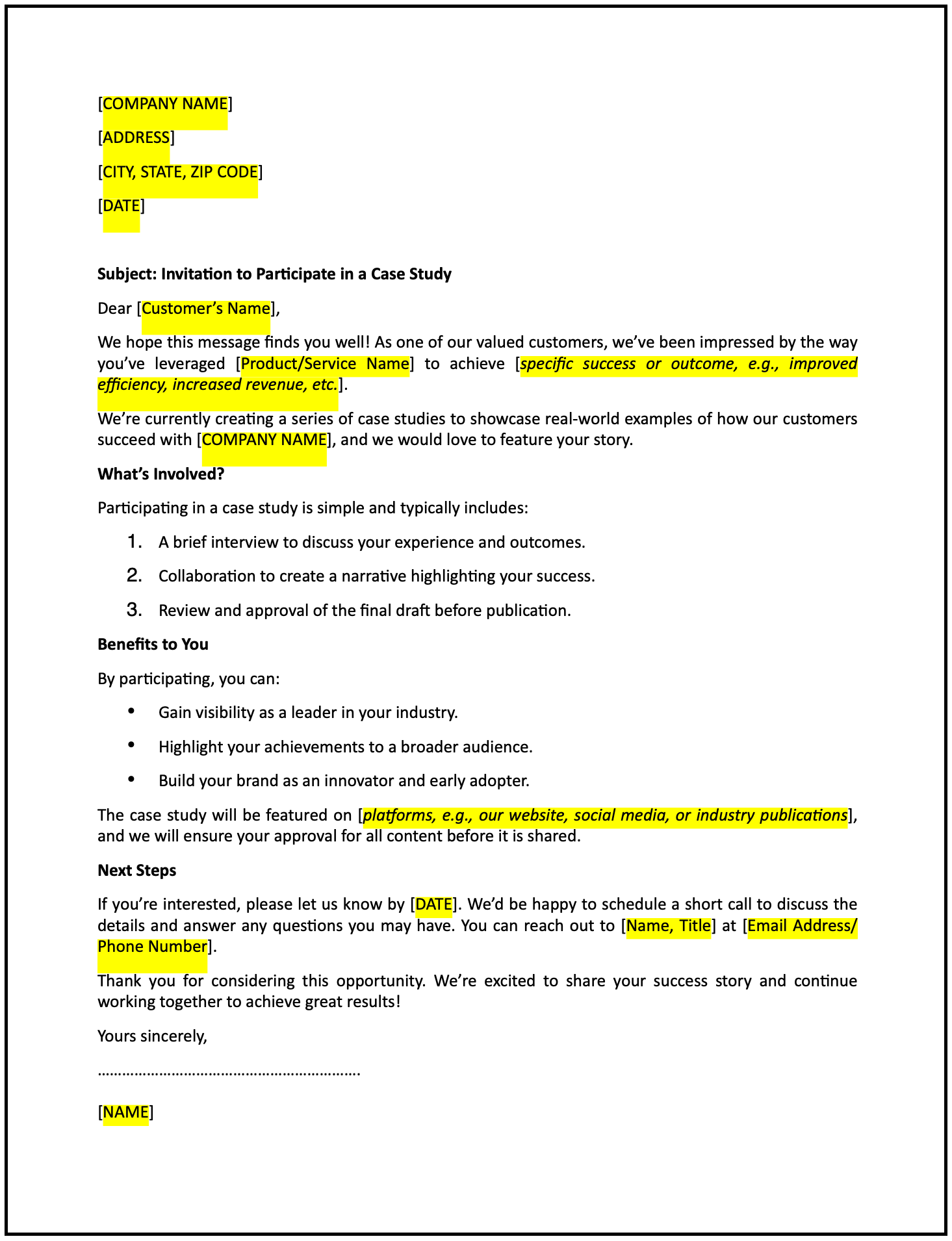Letter confirming mutual goals and KPIs for collaboration: Free template

Letter confirming mutual goals and KPIs for collaboration
A letter confirming mutual goals and KPIs for collaboration is a formal communication used to establish alignment between parties in a partnership or project. This letter outlines the agreed objectives, key performance indicators (KPIs), and responsibilities to ensure clarity, accountability, and a shared understanding.
How to use this letter confirming mutual goals and KPIs for collaboration
- Open with an introduction: Address the recipient respectfully and provide context for the collaboration, referencing prior discussions or agreements.
- Confirm mutual goals: Clearly outline the overarching objectives of the collaboration, emphasizing the shared purpose and desired outcomes.
- Specify the KPIs: Detail the key performance indicators agreed upon to measure the success of the collaboration. These might include metrics like timelines, deliverables, revenue targets, or audience engagement benchmarks.
- Outline responsibilities: Briefly describe the roles and responsibilities of each party to ensure accountability.
- Reiterate the benefits: Highlight how achieving these goals will create value for all parties involved.
- Include a confirmation request: Invite the recipient to confirm their agreement with the outlined goals and KPIs or suggest adjustments.
- Maintain a professional tone: Ensure the letter is clear, respectful, and focused on fostering alignment.
- Provide contact information: Include details for the recipient to reach out with questions or discuss any refinements.
Benefits of using a letter confirming mutual goals and KPIs for collaboration
This letter ensures a structured and professional way to align expectations and foster accountability in partnerships. Here’s how it helps:
- Promotes clarity: Clearly outlining goals and KPIs ensures all parties understand the collaboration’s purpose.
- Reflects professionalism: A well-crafted letter demonstrates respect and commitment to a successful partnership.
- Encourages accountability: Documenting roles and KPIs ensures all parties take ownership of their responsibilities.
- Fosters alignment: Highlighting shared objectives strengthens the foundation of the collaboration.
- Supports success: Establishing measurable KPIs provides a roadmap for achieving collaboration goals.
Tips for writing an effective letter confirming mutual goals and KPIs for collaboration
- Be specific: Clearly describe the goals, KPIs, and responsibilities to avoid ambiguity.
- Use professional language: Maintain a respectful and collaborative tone to build trust and alignment.
- Provide context: Briefly explain how the goals and KPIs support the overall purpose of the collaboration.
- Highlight mutual benefits: Emphasize how achieving the objectives will benefit all parties involved.
- Include actionable steps: Share instructions for confirming the agreement or providing feedback.
- Keep it concise: Focus on the key points while ensuring the tone is professional and engaging.
Frequently asked questions (FAQs)
Q: What details should I include in this letter?
A: Include the collaboration’s goals, KPIs, responsibilities, and a call to confirm agreement or suggest adjustments.
Q: Should I personalize the letter?
A: Yes, addressing the recipient by name and referencing specific discussions or agreements ensures clarity and attentiveness.
Q: Who typically sends this letter?
A: Project managers, team leads, or organizational representatives overseeing the collaboration typically send this letter.
Q: How formal should this letter be?
A: The tone should be professional yet approachable, focusing on building trust and alignment.
Q: When should this letter be sent?
A: Send the letter shortly after agreeing on goals and KPIs to ensure all parties are aligned.
Q: Can this letter include visuals or tables for the KPIs?
A: Yes, including a table or chart can make the KPIs more clear and actionable for all parties.
Q: Is acknowledgment from the recipient required?
A: Yes, requesting acknowledgment ensures mutual understanding and agreement on the outlined goals and KPIs.
This article contains general legal information and does not contain legal advice. Cobrief is not a law firm or a substitute for an attorney or law firm. The law is complex and changes often. For legal advice, please ask a lawyer.


